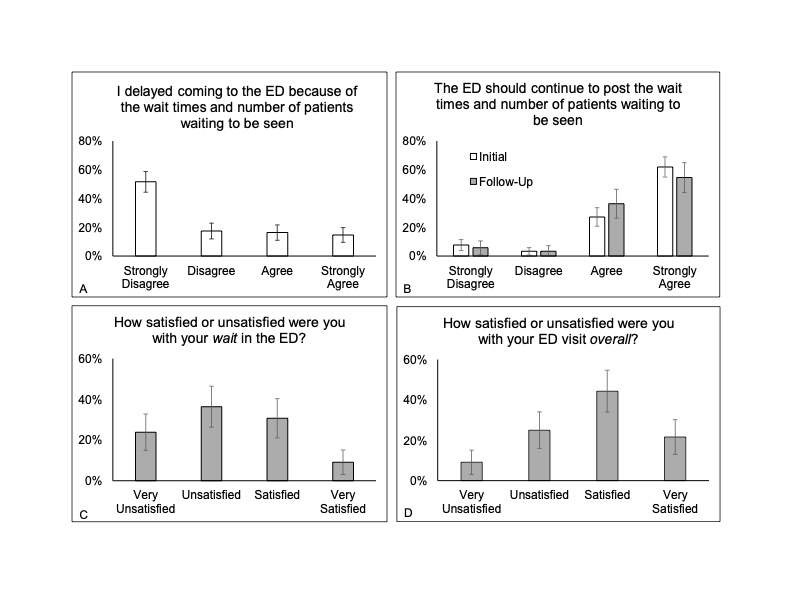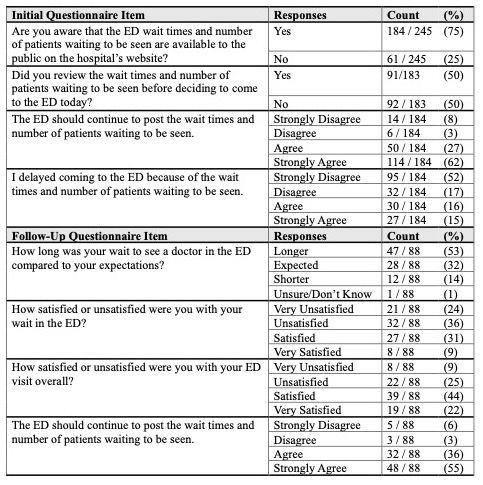Emergency Medicine 1
Session: Emergency Medicine 1
410 - Effects of Publicly Available Pediatric Emergency Department Wait Times
Friday, April 25, 2025
5:30pm - 7:45pm HST
Publication Number: 410.4584
Adir Baxi, University of Ottawa, Manotick, ON, Canada; Maala Bhatt, Children's Hospital of Eastern Ontario, Ottawa, ON, Canada; Stephanie Sutherland, Children's Hospital Ontario, Toronto, ON, Canada; Dennis Newhook, CHEO Research Institute, Ottawa, ON, Canada; Adele Quessy. Scarlett, University of Ottawa Faculty of Medicine, Ottawa, ON, Canada; Justine Tubin, uOttawa, Sudbury, ON, Canada; Victoria Purdy-Millaire, University of Ottawa Faculty of Medicine, Ottawa, ON, Canada; Melanie A. Bechard, University of Ottawa Faculty of Medicine, Ottawa, ON, Canada

Melanie A. Bechard, MD MPH FRCPC (she/her/hers)
Assistant Professor
University of Ottawa Faculty of Medicine
Ottawa, Ontario, Canada
Presenting Author(s)
Background: Many Canadian pediatric emergency departments (EDs) display current or anticipated wait time metrics to the public. It is unclear if patients and caregivers actually consult public wait time displays before accessing care, whether the wait times impact their decision to seek emergency care, and if patient satisfaction is affected.
Objective: We aimed to determine whether publicly posted pediatric ED wait times influences patient and caregiver decisions to seek emergency care, and their satisfaction during the ED visit.
Design/Methods: This is a mixed methods study. Patients or caregivers waiting to see a physician at a tertiary care pediatric ED who were assigned a Canadian Triage Acuity Score of 2-5 and were fluent in English or French were eligible to complete a questionnaire about the public wait time display. A follow-up questionnaire was sent 48 hours later to assess their satisfaction with the wait and ED visit overall. Questionnaire responses were summarized using descriptive statistics and post-hoc chi square testing. Participants were invited to complete a semi-structured interview about the public wait time display. Interview transcripts underwent content analysis.
Results: From June 2023 through April 2024, 245 participants completed the initial questionnaire. Of these, 184 (75%) were aware of the publicly-available pediatric ED wait times, and 91 of 183 (50%) reviewed the wait times before coming to the ED. Some participants (57/184; 31%) delayed coming to the ED because of wait times. In the follow-up questionnaire (n=88), 53% of patients waited longer than expected. 66% of participants were satisfied or very satisfied with the ED visit overall, whereas 40% of participants were satisfied or very satisfied with their wait times. Almost all (80/88; 91%) participants agreed or strongly agreed the hospital should continue to display wait times. Checking the public wait time display was not associated with overall satisfaction (chi2=0.87, p=0.83) or wait time satisfaction (chi2=1.2, p=0.74). Interview content analysis (n=5) revealed strong support for the public wait time display. Though participants reported that wait times did not affect their decision to seek care, they found the display reassuring and helpful to prepare for the wait. All interviewed participants supported continued public display of wait times.
Conclusion(s): Public pediatric ED wait time displays are valued by patients and caregivers and do not seem to impact satisfaction with their actual wait time or ED visit. Most patients seem to seek care regardless of the displayed wait time.
Figure 1. Questionnaire Responses
 Selected responses from the initial questionnaire (A, B) and follow-up questionnaire (B, C, D). Error bars represent 95% confidence intervals. ED = Emergency Department.
Selected responses from the initial questionnaire (A, B) and follow-up questionnaire (B, C, D). Error bars represent 95% confidence intervals. ED = Emergency Department.Table 1. Questionnaire Responses

Table 2. Content Analysis
.jpg) Qualitative content analysis of participant interviews (n=5)
Qualitative content analysis of participant interviews (n=5)Figure 1. Questionnaire Responses
 Selected responses from the initial questionnaire (A, B) and follow-up questionnaire (B, C, D). Error bars represent 95% confidence intervals. ED = Emergency Department.
Selected responses from the initial questionnaire (A, B) and follow-up questionnaire (B, C, D). Error bars represent 95% confidence intervals. ED = Emergency Department.Table 1. Questionnaire Responses

Table 2. Content Analysis
.jpg) Qualitative content analysis of participant interviews (n=5)
Qualitative content analysis of participant interviews (n=5)
